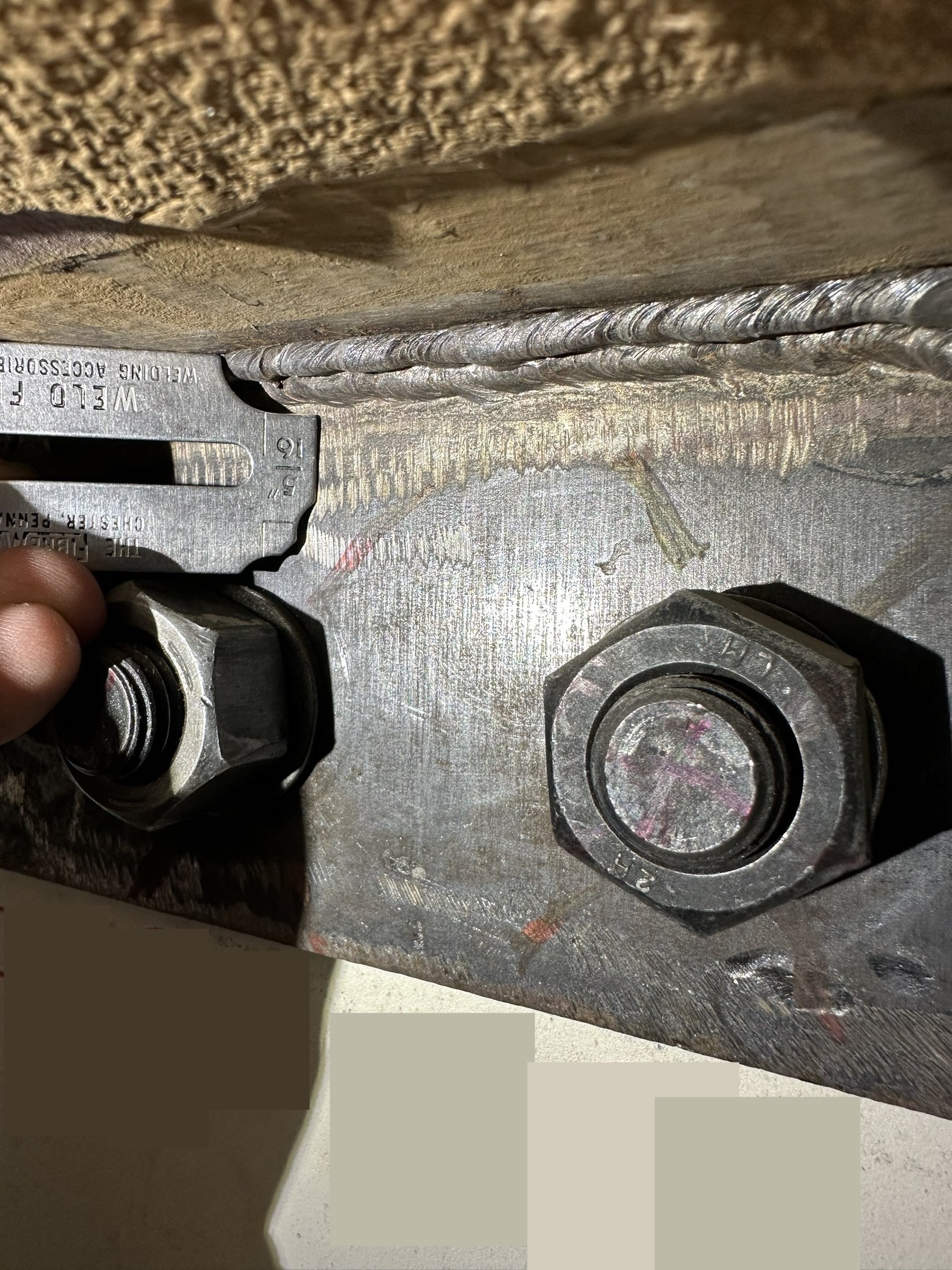Welding Inspection Service: Guaranteeing Compliance and Toughness
Revealing the Diverse Variety of Welding Providers and Their Benefits
As sectors remain to advance and require precision in their production processes, the relevance of welding solutions has actually ended up being significantly noticable. From the versatility of arc welding to the efficiency of MIG welding, and the intricate job completed via TIG welding to the accuracy of laser welding, the range of welding methods readily available is large. Each technique brings its very own collection of benefits and applications, dealing with a large range of needs throughout different industries. Understanding these varied welding services and their benefits can offer important understandings into maximizing construction procedures and accomplishing remarkable outcomes.
Types of Welding Provider
Amongst the various kinds of welding solutions offered, each deals special benefits and applications in different sectors. One typical type is MIG welding, additionally referred to as Gas Metal Arc Welding (GMAW), which utilizes a cable electrode to sign up with steels with each other. MIG welding is valued for its rate and versatility, making it appropriate for a large range of materials consisting of aluminum, steel, and stainless steel. An additional extensively utilized technique is TIG welding, or Gas Tungsten Arc Welding (GTAW), which makes use of a non-consumable tungsten electrode to create a tidy and precise weld. TIG welding is favored for its capability to produce top quality welds in thin materials, making it suitable for industries such as aerospace and auto.
Furthermore, there is Stick welding, or Protected Metal Arc Welding (SMAW), which is understood for its simpleness and performance, especially in outdoor or gusty conditions. This technique is frequently used in building and construction and pipeline welding. Finally, there is Flux-Cored Arc Welding (FCAW), which is a flexible process ideal for thick products and can be made use of in both semi-automatic and automatic applications. Each kind of welding service has its staminas and is selected based on factors such as material type, thickness, and the particular demands of the project handy.
Advantages of Arc Welding
Arc welding supplies a wide variety of advantages that satisfy various industrial demands and demands. Among the key benefits of arc welding is its adaptability. Welding Inspection Service. This welding approach can be made use of on a variety of metals and alloys, making it a popular option for markets dealing with diverse materials. Additionally, arc welding is understood for its high welding speeds, which can dramatically enhance productivity in producing procedures. The process is also relatively easy to automate, minimizing labor costs and enhancing general performance.
Another secret benefit of arc welding is its capability to produce long lasting and solid welds. The warmth generated throughout the process aids to develop a metallurgical bond in between the base metals, leading to welds that are able to withstand high degrees of stress and pressure. Arc welding also creates precise and tidy welds, reducing the need for added completing job. Generally, the advantages of arc welding make it a valuable device for different markets seeking to achieve top notch welds efficiently.
Benefits of MIG Welding
With a focus on efficiency and durability in welding procedures, MIG welding provides that site an unique collection of benefits that match the adaptability and toughness located in arc welding. MIG welding, or Gas Steel Arc Welding (GMAW), is recognized for its rate and convenience of usage.
Additionally, MIG welding creates tidy welds with marginal splatter, decreasing the requirement for considerable cleanup after the welding process. The convenience of MIG welding allows for welding a variety of materials, consisting of light weight aluminum, stainless steel, and moderate steel. This adaptability makes MIG welding ideal for different markets, from automobile to building.
Furthermore, MIG welding is recognized for its high deposition rates, suggesting even more product can be deposited in a shorter quantity of time contrasted to other welding processes. This leads to increased performance and cost-effectiveness for jobs that call for large volumes of welds. In general, the advantages of MIG welding make it a beneficial strategy for attaining effective and sturdy welds across different applications.

Exploring TIG Welding Advantages
TIG welding, likewise recognized as Gas Tungsten Arc Welding (GTAW), provides an unique set of benefits that accommodate accuracy and control in welding applications. Among the key benefits of TIG welding is its ability to produce top notch, tidy welds without the need for filler material. This makes it ideal for welding thin products where aesthetic appeals and precision are critical, such as in the aerospace and auto sectors. Furthermore, TIG welding gives superb control over the warmth input, leading to marginal distortion of the work surface.
Moreover, TIG welding can be utilized on a broad variety of steels, including stainless steel, titanium, copper, and light weight aluminum, making it a functional choice for various welding tasks. The procedure likewise allows for welding in numerous settings, providing adaptability in difficult welding circumstances. TIG welding produces welds with exceptional toughness and integrity, making it a recommended go to website choice for critical applications where weld quality is paramount. On the whole, the control, precision, and convenience supplied by TIG welding make it an important strategy in the welding market (Welding Inspection Service).
Advantages of Laser Welding

An additional advantage of laser welding is its flexibility in dealing with a vast variety of materials, including metals, plastics, and even dissimilar products. This adaptability makes laser welding suitable for varied industries such as auto, aerospace, electronics, and medical devices. The non-contact nature of laser welding also decreases contamination, making it a eco friendly and clean welding technique.
Additionally, laser welding makes it possible for complex and detailed weld geometries click here to read that may be testing to accomplish with conventional welding methods. This capability opens up brand-new style possibilities and permits for the manufacturing of lighter and extra innovative elements - Welding Inspection Service. In general, the benefits of laser welding make it a recommended selection for many production applications looking for high precision and performance
Conclusion

Arc welding gives durable and strong welds, while MIG welding offers efficiency and adaptability. TIG welding ensures tidy and precise welds, and laser welding provides high accuracy and rate.
From the adaptability of arc welding to the efficiency of MIG welding, and the intricate work completed through TIG welding to the precision of laser welding, the selection of welding methods offered is substantial. One typical kind is MIG welding, likewise known as Gas Metal Arc Welding (GMAW), which uses a cord electrode to join steels together. In addition, arc welding is known for its high welding rates, which can significantly raise performance in making processes.With a focus on efficiency and resilience in welding processes, MIG welding provides a distinct collection of advantages that enhance the convenience and strength located in arc welding.TIG welding, likewise recognized as Gas Tungsten Arc Welding (GTAW), supplies a distinct set of advantages that provide to accuracy and control in welding applications.